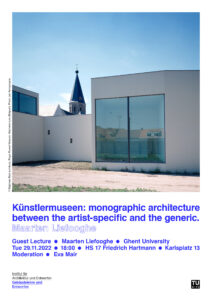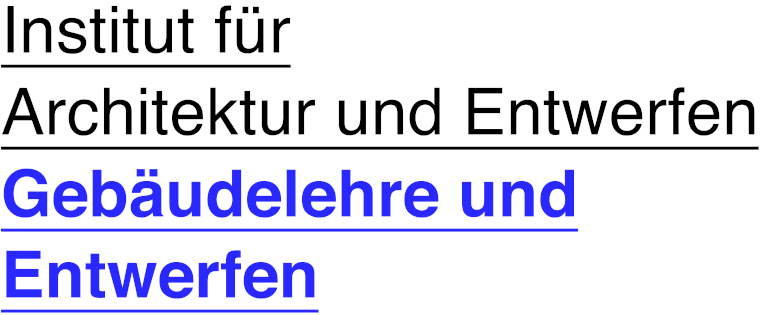Künstlermuseen: monographic architecture between the artist-specific and the generic. – Maarten Liefooghe

Maarten Liefooghe
is associate professor in architectural theory, history and criticism at Ghent University, Belgium. He publishes on museums and exhibitions, on contemporary architectural culture and on the latter’s interactions with heritage. Liefooghe is also a member of the editorial board of OASE Journal for Architecture.
Lecture focus
In typological literature on institutional buildings, the artist museum often poses a classification problem. In his A history of building types, for example, Pevsner referred to artist museums only as one of the „oddments of thematic kinds“ in his chapter on museums. Also more recent literature on museum architecture rarely discusses artists‘ museums – and indeed, Scarpa’s extension (1955-57) for Canova’s plaster model gallery can also simply be discussed as a museum extension, and Gigon and Guyer’s Kirchner Museum (1989-92) does make use of „spatial interpenetration.“
Then again, in architecture-critical reviews, artist museums are invariably treated as exceptional, almost one-off design commissions. They are accordingly always evaluated in isolation, and almost never in comparison with other artist museums. In the reviews, there is always the expectation that these museum buildings would be designed entirely „tailor-made“ for the specific artist in question. Could a spatial, narrative and visual symbiosis between place, person, collection, and building be established here – an accordance of the sort that hardly seems possible in regular art museums with their heterogeneous collections? How should we understand these somewhat naive cultural expectations of encounter, specificity, customization, interpretation, portrayal? And can/should architecture (entirely) meet these expectations?
In this talk, I advance an analytical model of the artist museum that questions this symbiosis and that allows us to reflect on the institutional ambiguities of the artist museum all the way through to architecture: artist museums mix in varying ratios aspects of the person memorial, the art museum, and the archive, which each represent different logics of collection, place, and visitation.
This mixture holds something essential to artist museums, but it also entails constant negotiation: do its museum galleries distance themselves from or connect with the (biographically significant) living environment? Should the new architecture follow (and even portray) and reinforce the character of this body of work, or provide a contrasting background for it? And so on. It is up to architecture – but also collection policy, curation and programming – to turn the opportunities and risks of these ambiguous institutions into meaningful work in concrete situations and projects. Historical and more current examples will make this tangible.
Gent Universety, Department of Architecture and Urban Planning, Maarten Liefooghe







